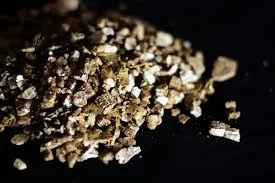Aug . 21, 2024 06:46 Back to list
Vermiculite Concrete Production and Its Benefits in Modern Construction Techniques
Understanding Vermiculite Concrete Manufacturing
Vermiculite concrete is a lightweight, fire-resistant material made from expanded vermiculite, a naturally occurring mineral. This unique product is increasingly becoming a popular choice in construction due to its exceptional insulation properties, versatility, and eco-friendliness. In this article, we will explore the manufacturing process of vermiculite concrete, its advantages, and its applications in modern construction.
The Manufacturing Process
The production of vermiculite concrete begins with the mining of raw vermiculite. This mineral is found in large quantities in various regions around the world, with significant deposits in the United States, South Africa, and Brazil. Once mined, vermiculite undergoes a process of exfoliation, which involves heating the raw material to high temperatures. During this process, the mineral expands, increasing in volume and transforming into lightweight, accordion-like particles.
After exfoliation, the expanded vermiculite is mixed with various binding agents such as Portland cement, water, and sometimes additives that enhance its properties. The mixing ratio can vary depending on the desired strength and insulating characteristics of the final product. Manufacturers often adjust these proportions to create specific concrete grades tailored for various applications.
After thorough mixing, the vermiculite concrete is poured into molds or forms where it is allowed to set and cure. This curing process may take several days, during which the material gains strength. Once cured, the resultant vermiculite concrete can be cut, shaped, and finished according to the requirements of the construction project.
Advantages of Vermiculite Concrete
One of the primary advantages of vermiculite concrete is its lightweight nature. Compared to traditional concrete, which can be heavy and cumbersome, vermiculite concrete reduces the overall weight of structures. This characteristic is particularly beneficial in earthquake-prone areas where lighter structures can better withstand seismic forces.
vermiculite concrete manufacturer

Additionally, vermiculite concrete boasts excellent thermal insulation properties. It helps maintain stable indoor temperatures by minimizing heat transfer, making it a popular choice for energy-efficient building designs. This enhanced insulation not only leads to increased comfort for occupants but also contributes to reduced energy consumption and lower utility bills.
Moreover, vermiculite concrete is fire-resistant, making it ideal for applications where fire safety is a concern. The material can withstand high temperatures and does not emit harmful gases when exposed to fire. This trait makes it suitable for use in fire-rated walls, ceilings, and other critical components of buildings.
Applications in Construction
The versatile nature of vermiculite concrete allows for a wide range of applications in construction. It is widely used as a lightweight fill material in foundations and road construction, where it helps improve load distribution without adding extra weight. Additionally, it is often employed in flooring systems, roof decks, and insulation layers in walls.
Vermiculite concrete is also prized in specialized settings, such as in the construction of swimming pools, where its buoyancy contributes to the overall stability and durability of the structure. In industrial applications, vermiculite concrete is utilized in the construction of fireproof enclosures for equipment and machinery.
Conclusion
In conclusion, vermiculite concrete represents an innovative and sustainable option in the construction industry. Its unique properties, including lightweight nature, excellent insulation, and fire resistance, make it an appealing choice for builders and architects. As more manufacturers recognize the benefits of vermiculite concrete, its use is likely to become even more prevalent, paving the way for greener, safer, and more efficient construction practices.
-
Eco-Friendly Granule Covering Agent | Dust & Caking Control
NewsAug.06,2025
-
Fe-C Composite Pellets for BOF: High-Efficiency & Cost-Saving
NewsAug.05,2025
-
Premium Tundish Covering Agents Exporters | High Purity
NewsAug.04,2025
-
Fe-C Composite Pellets for BOF | Efficient & Economical
NewsAug.03,2025
-
Top Tundish Covering Agent Exporters | Premium Quality Solutions
NewsAug.02,2025
-
First Bauxite Exporters | AI-Optimized Supply
NewsAug.01,2025
